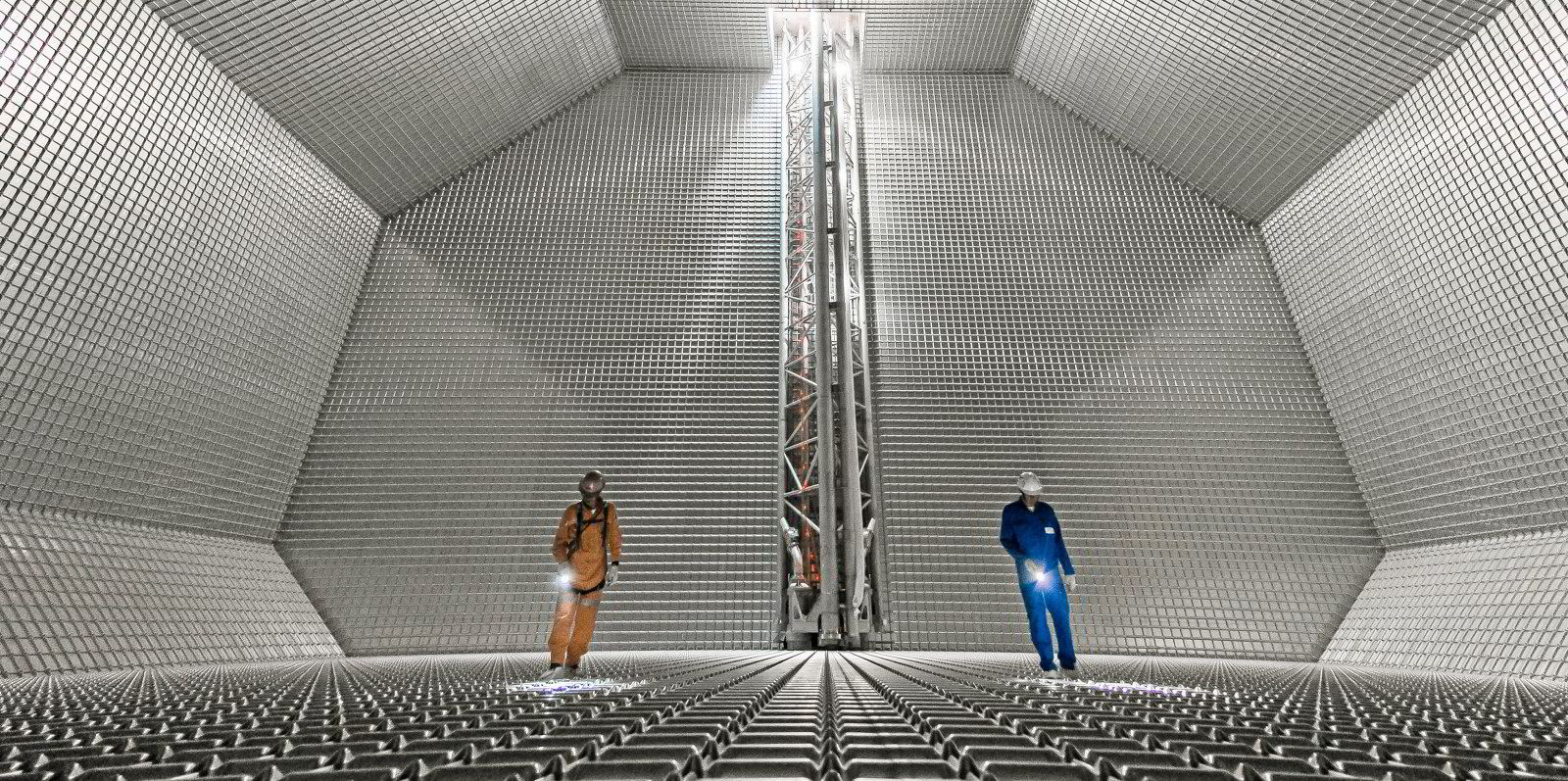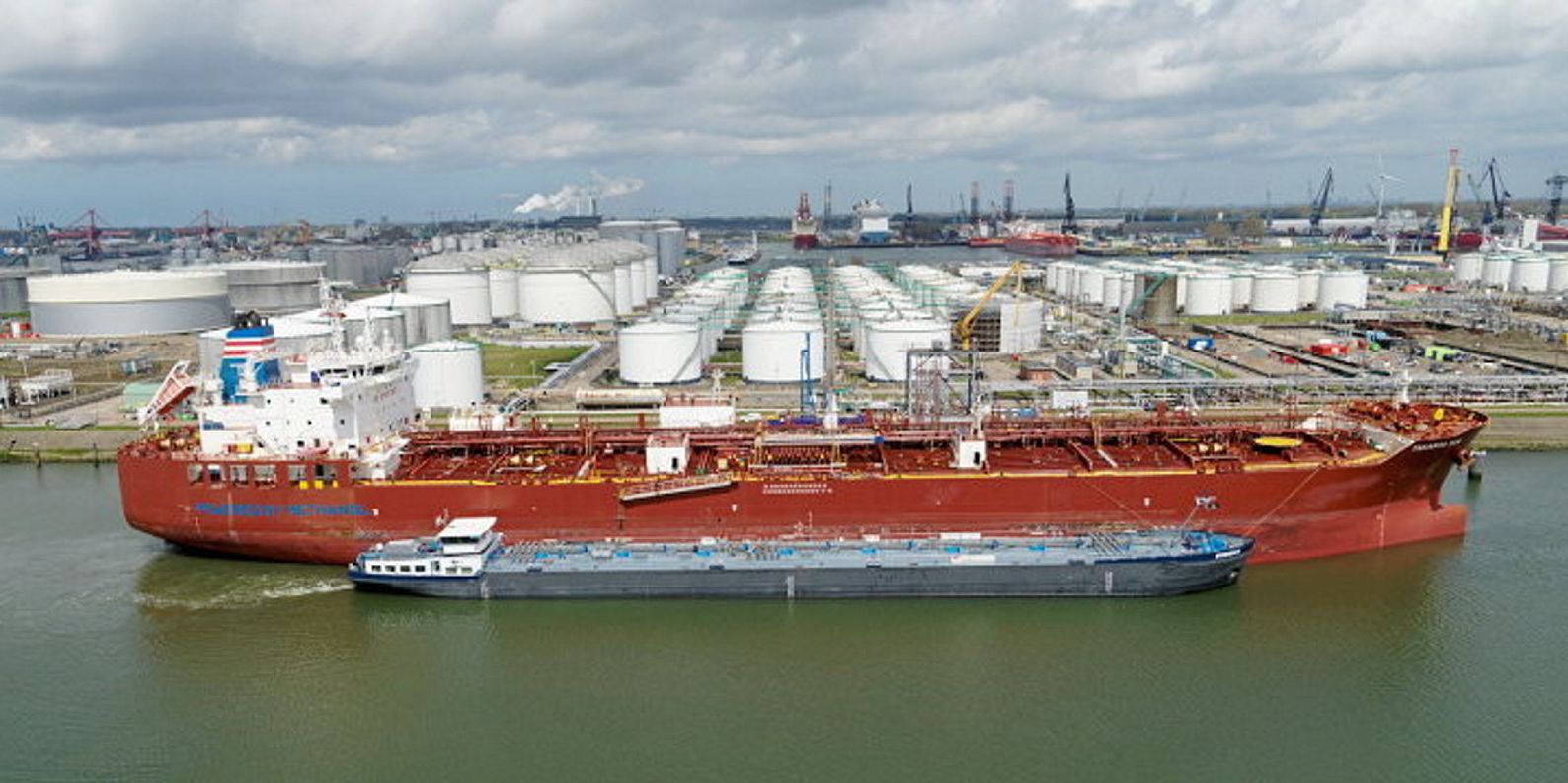Boxship owner Seaspan Corp recently made a key technical adjustment to the latter delivering half of its order for 10 dual-fuelled neo-panamax boxships, switching the vessels’ bunker tanks from a type-B to a membrane-type design in a bid to make the ships “ammonia-ready”.
The owner, which is building the 10 ships at Samsung Heavy Industries for charter to Israeli liner operator Zim, will now fit five of the vessels with 12,000-cbm, GTT-designed Mark III bunker tanks.
The first five containerships will sport 9% nickel steel type-B tanks as originally specified. But according to the International Code of Safety for Ships using Gases or other Low-flashpoint Fuels, it is not acceptable to use tanks with a nickel content above 5% to carry ammonia — hence the switch.
Owner interest
Seaspan chief operating officer Torsten Pedersen said at the time that by building the ships “ammonia-ready” the company is “taking a long-term view towards future-proofing these vessels”.
GTT commercial director David Colson said for non-LNG carrier owners, the LNG bunker tank is only a small part of the ship and there could be a temptation to take the design the yard is offering.
But he added: "We see owners now taking more interest in the tank and its performance."
To date, off-the-shelf type-C designs made of 9% nickel steel have proved to be the go-to design for LNG bunker tanks.
These are comparatively cheap, compared with integrated hull solutions such as type-B and membrane systems, can be installed in a variety of easy-to-access locations on a vessel and are readily available.
But as shipowners have moved to order larger, deepsea tonnage, bigger bunker tanks are needed to accommodate vessels’ longer trading ranges. This, in turn, has led to a push to hold down capital costs and minimise the loss of cargo or passenger space, in particular for containerships and cruise vessels.
In addition, owners are now also needing to consider the future fuels they might need.
Boxship mash-up
Both type-B and membrane tanks have now been ordered for containership newbuildings.
But there is also another new kid on the block.
Since 2010, South Korean steelmaker Posco has been working on the development of high-manganese steel as a cheaper cryogenic material to the 9% nickel alloy or stainless steel commonly used in LNG bunker tanks.
To date, just one 50,000-dwt bulker working on South Korean coastal trades has been built with bunker tanks constructed using the new steel.
But in the past 12 months, South Korea's Daewoo Shipbuilding & Marine Engineering has racked up a series of 26 orders for dual-fuel VLCCs and ultra-large containerships, each of which will be equipped with either type-C or type-B bunker tanks built from high manganese steel.
| Vessel | Number of ships | Owner/charterer | Ship size | Bunker tank type | Number and size of LNG bunker tank per ship |
| VLCCs | 10 | Advantage Tankers, AET and International Seaways/Shell | 300,000 dwt | Type-C | 2 x 3,000 cbm |
| Containerships | 12 | Hapag-Lloyd | 23,660 teu | Type-B | 1 x 18,500 cbm |
| VLCCs | 4 | Adnoc Logistics & Services | 300,000 dwt | Type-C | 2 x 3,000-cbm |
A DSME official said high-manganese steel is also newly tested and verified by Posco for the carriage of ammonia.
But its lower cost appears to be the key draw at present.
A DSME spokesman said in raw material terms, the price of the steel would be about 70% that of 9% nickel steel and, depending on its size, the tank would likely cost about 80% to 85% less.
Considerations
French designer GTT, which has largely cornered the LNG carrier sector on tank design, has also looked at high-manganese steel. The company has so far developed a different alloy, which has been rolled into prototype thin membrane sheets but has yet to be tested.

Alexandre Tocatlian, head of product lines at GTT, said owners building LNG-fuelled vessels need to consider the experience of the tank and fuel gas system providers, and look for companies that will follow them beyond the shipyard warranty on their vessels.
The impact of the weight of the tank on the vessel’s arrangement and the calculation of deadweight or cargo loss is also important, as is boil-off gas management and maintenance, including tank access.
GTT is targeting the containership market, where it believes it can offer larger and cheaper tank solutions over type-B alternatives offered by shipyards that will also save on cargo space.
For the same size of vessel, Tocatlian said the company is able to offer more capacity with membrane than a type-B tank. He gave the example of a 15,000-teu boxship for which GTT could offer a 14,000-cbm membrane-type tank design, compared with a shipyard’s 12,000-cbm type-B alternative.
But the company feels its membrane-type designs can also work for cruiseships, car carriers, large bulk carriers and VLCCs.







